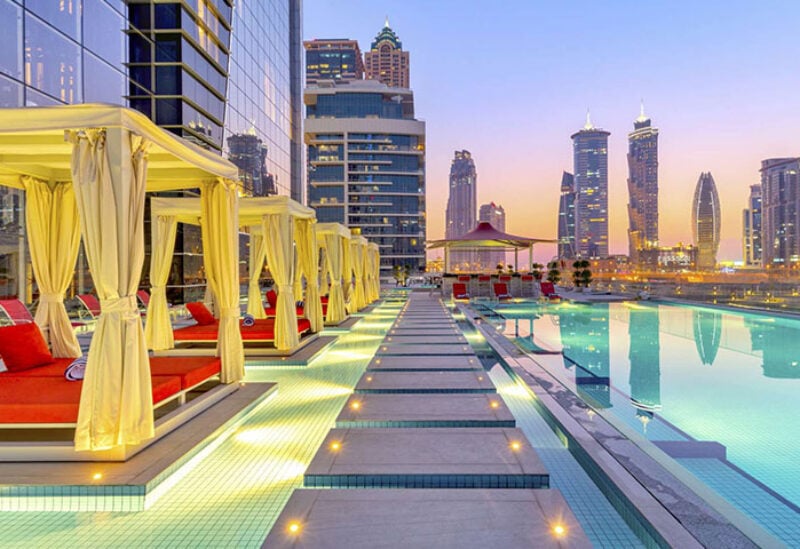
Dubai Hotels
Occupancy rates in Dubai hotels recorded a surge in June, boosted by Eid staycations, a pick-up in regional travel and hoteliers cutting prices to attract guests over the summer season.
The average occupancy rate increased to 61.9 percent in June, jumping 139 per cent compared to the same month in 2020, when the UAE closed its borders to contain the spread of Covid-19, according to hospitality data and analytics specialist STR. June’s performance has also surged from 58.5 percent in May and 59.4 per cent in April.
“The improvement in hotel occupancy rates in June probably reflects Dubai attracting increasing numbers of tourists from neighboring countries prior to any additional restrictions this month, as well as staycations for Eid holidays,” Shady Elborno, head of macro strategy at Emirates NBD Research, said in a report on the tourism sector, on Wednesday.
Dubai hotels’ June revenue per available room (RevPar) – a key performance metric calculated by multiplying a hotel’s average daily room rate by its occupancy rate – declined by 17 percent month-on-month as hotel operators cut prices to attract customers during the hot summer months, the report said. However, RevPAR was up by close to 250 percent year-on-year after travel restrictions to the UAE were removed.
Restrictions imposed by other countries on their residents travelling to the UAE pose the biggest headwind to the recovery of the tourism sector, according to the travel sector outlook by Dubai’s biggest lender.
The continued travel restrictions on flights from India that were put in place on April 25, 2021, in response to the surge in coronavirus cases there, have had an impact on Dubai’s travel and hospitality sector as India is the biggest source market of international visitors to Dubai, Mr Elborno said in the report.
“The situation with travel restrictions from neighbouring and other countries continues to be very dynamic with dates often changing over short periods of time as both the UAE and other countries continually take decisions respective to their assessment of travel risk conditions,” Mr Elborno said.
Before the pandemic, Gulf countries accounted for 18 percent of Dubai’s international visitors. Saudi Arabia was the second largest source market after India.
“The relaxation of those restrictions, especially from Saudi Arabia, over May and June would have improved those dynamics; however, the situation remains in flux as new restrictions re-imposed by Saudi Arabia in July have shown,” the report said.